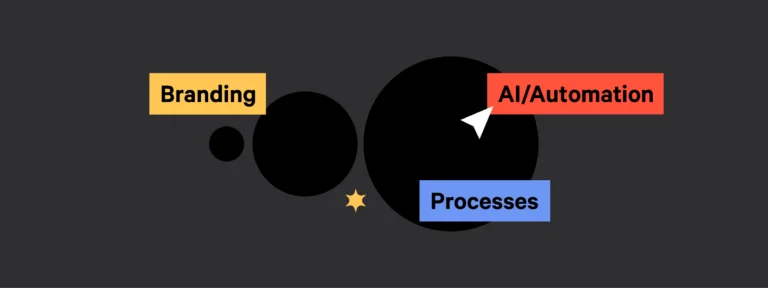Discover expert insights from 600+ IT leaders as they reveal how they tackle change management challenges, optimize ROI, and ensure smooth implementation of new software.
An Introduction to Software Implementation in Investment Banks
Effective software implementation is crucial for safeguarding financial performance, maintaining a competitive edge and generating a return. However, many banks are struggling with poor deployments, leading to wasted budgets and missed opportunities. But what’s driving these substandard deployments, and how can banks optimize their spending to improve ROI and overcome the notorious resistance to change?
We spoke with 600+ IT and innovation leaders at investment banks in Australia, the UK and USA, to explore underlying causes of these challenges, how much money they’re wasting on unused software, and what strategies they’re undertaking to ensure smooth implementation.
Let’s dive into industry insights from leaders at a range of company sizes—from boutique banks to bulge brackets.
What Software Challenges are Investment Banks Facing?
94% of respondents are facing tech budget cuts this year, and the demand to deliver results is at an all-time high. To add to the pressure, nearly all banks are also struggling to make the most of their remaining budget, with 68% of respondents estimating that a quarter of their budget is wasted due to poor software deployment or utilization challenges.
The need for investment banks to regularly review their tech stack has never been greater. Software must be delivering clear ROI, with proof that it’s being actively used. Otherwise, it’s difficult to justify the spend and you don’t properly know what impact it’s having.
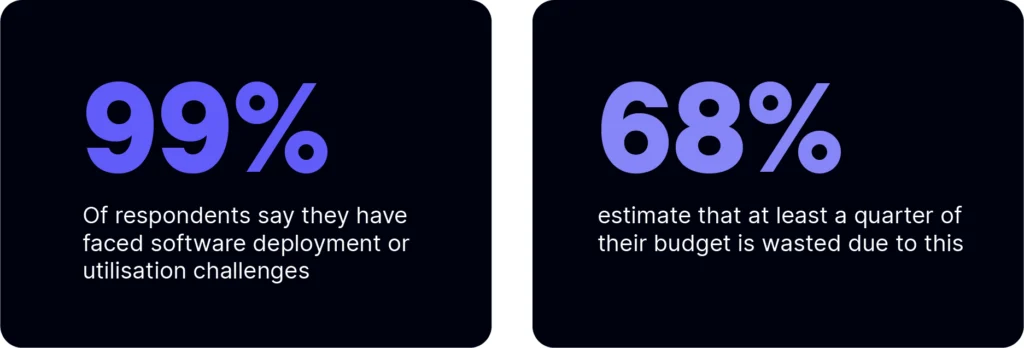
Stripped-back tech budgets and software implementation issues aren’t just an IT issue – these challenges negatively impact the wider business and overall financial performance, so addressing them is a matter of urgency.
Banks Are Grappling With Widespread Budget Cuts
Geopolitical and economic uncertainties have left investment banks with no choice but to reduce software budgets.
CloudEagle have said, “CFOs are pressured to push mandates to cut software spend between 10% to 30%, as the current economic downturn, funding crunch facing businesses, and the race to be cashflow positive are forcing businesses to re-evaluate budgets and spending patterns”.
Whilst reducing software spend might be necessary, banks have expressed concerns about safeguarding financial performance, capitalizing on emerging opportunities and meeting client expectations—so it’s crucial banks regularly review their tech stacks, identify their business needs and invest in software that will make the most of scarce resources.
Bad Software Deployment is Costing Banks Thousands
Innovation leaders have reported that bad software deployments and low adoption rates are eating up remaining budgets. For instance, 67% of investment banks with budgets over $5M are wasting at least $1M every year.
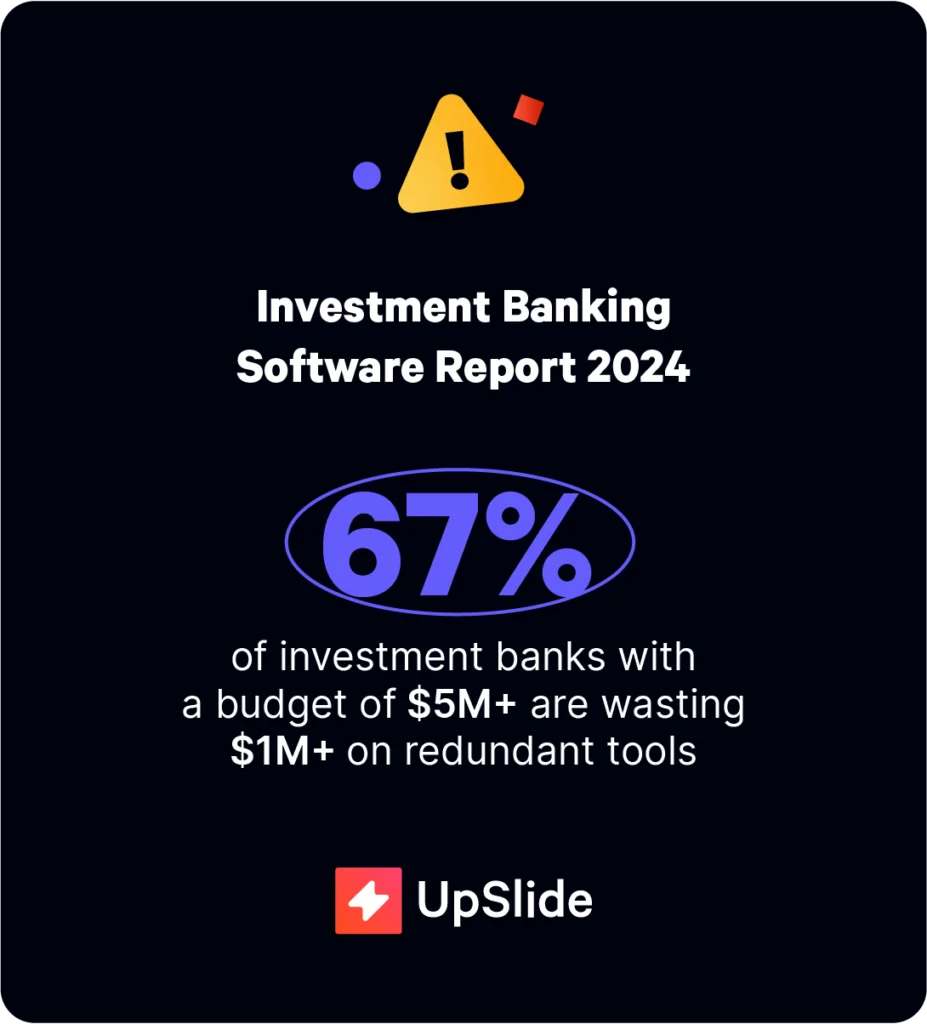
More worryingly, 68% of respondents with a budget of over $6.2M are wasting over a staggering $1.2M on redundant tools. These are some shocking figures that can have severe consequences on financial performance and wider business initiatives.
Other Implications of Poor Software Implementation
Unfortunately, the financial impact of poor software implementation extends beyond wasted licenses. It can also eat into budgets through:
- Wasted time resolving software glitches and/or using manual workarounds
- Customer dissatisfaction via service disruptions
- Risk of fines due to non-compliance with regulations
- Missed business opportunities by not being able to respond to market changes
- Falling behind the curve
Inability to Reinvest Savings Into Innovation
Reduced budgets and wasted software also make it significantly harder for banks to invest in new business initiatives.
“Inefficient SaaS management isn’t just a cost problem; it’s an innovation killer,” says Ben Pippenger, Zylo’s chief strategy officer and co-founder, “when budgets bleed out through waste and hidden costs, that’s money you can’t invest in new business initiatives. Companies taking charge of their SaaS environments can free up millions in cost savings for reinvestment.”
For investment banks, this can mean a failure to transform their service delivery for personalized customer experiences and adequately prepare for the future of banking in 2030.
Top Five Factors Hindering SaaS Value

To help make the most of your company’s tech investment, we need to first understand the underlying causes of these issues.
Let’s delve into five factors voted most likely to hinder the value generated from SaaS investments and negatively impact deployment.
1. Low Quantity and/or Quality of Internal Training
IT and innovation leaders have shared that infrequent or bad training is the biggest factor draining the value of software investments. This is likely because low-quality training can make change significantly harder to manage, another important factor in deployment success.
Effective training ensures teams feel confident using the software and integrating it into their workflows. Inadequate training can lead to resistance, decreased efficiency, and, in extreme circumstances, overall failure of the change initiative.
Inadequate training and poor change management correlate with financial loss
Our findings suggest a clear correlation between inadequate internal training, poor change management and significant financial losses for businesses. Companies with fewer issues in these areas tend to experience less budgetary waste, and as xMatters states, you can’t overlook the cost of training your employees when budgeting.

Choosing a premium vendor with a dedicated implementation service will significantly increase the likelihood of a successful, compliant software deployment that streamlines workflows without jeopardizing current operations.
Make sure the vendor has in-house consultants who can provide regular training for your teams and encourage high usage to avoid software redundancy.
François Bard
Head of Engineering
2. Substandard Deployment Processes
Substandard deployment processes can be a result of bad communication from the vendor, delays during the implementation period and unexpected security issues. These can lead to service disruptions, inflated costs and diluted ROI of the new software.
The good news is that most of these issues can be handled by your SaaS provider—so long as you choose the right one for your business. Look for a proven track record, such as client success stories from other investment banks, and what procedures they have in place for deploying their software and mitigating risk.
Want to learn more?
- Explore these 10 steps for choosing the right tech vendor for your business
- Discover tips for selecting the best productivity tool
3. Ineffective Change Management
IT and innovation leaders believe that the third biggest factor is ineffective change management. As mentioned, we found that poor training correlates with ineffective change management, but managing change goes well beyond training your staff.
Implementing and integrating new software is a huge step, particularly for investment banks that have worked with the same legacy tools for the past few decades. Thousands of banks are using severely dated software, with some of the most critical platforms going back to the 1980s. This makes updates costly and potentially risky.
Investment banks also face much stricter regulations than many other industries, so IT teams are understandably reluctant to modernize software, due to the the risk of huge fines or worry of jeopardizing operations.
Cultural Resistance
Cultural resistance further adds to the challenge.
“Many businesses still prefer traditional methodologies when it comes to software development,” says Gaetano Ziri, software engineer at Auriga, an Italian provider of bank software. “Implementing Continuous Integration means that they would have to retrain their staff and also change existing operations. Most companies want to meet their objectives quickly and may be resistant to change.”
Every new change initiative will encounter resistance, so change must be managed effectively, either internally or by your vendor.
But whichever route you take, you’ll need comprehensive plans for:
- High-quality training for all relevant teams
- Adoption and communication
- Software rollout
All of the above mitigate the risks of change and will ensure high adoption rates of your new software.
4. Unidentified Dependencies
30% of investment banks are establishing stricter SLAs with their vendor to prevent unidentified dependencies, as the financial loss can be significant.
Unidentified dependencies can cause many problems—ranging from project delays and increased costs, to compliance risks and system failures in extreme circumstances.
Risk Factors For Unidentified Dependencies
Risk factors can include:
- Vendors without adequate API documentation
- Vague SLAs
- A lack of security measures in place
To prevent unidentified dependencies, look for vendors with detailed API documentation, comprehensive SLAs and stringent security measures (such as SOC Type II compliance).
Need help? Here’s how to ensure your vendor meets SLAs.
5. Lack of Integration With Existing Tech Stacks
Siloed tech stacks have been reported as one of the leading challenges amongst IT and innovation teams, leading to unnecessary manual work and more room for human error. Disparate systems are unable to communicate effectively with each other, resulting in data silos where information is isolated and difficult to access in a streamlined workflow. This hinders operational efficiency, complicates compliance and makes reporting challenging – especially if a bank is looking to scale.
Vareto states that “the ultimate goal is to create a technology ecosystem that works in harmony, where data flows freely, and the systems complement each other”. This not only saves time and allows teams to focus on higher-value tasks (such as strategic thinking), but IT teams will be able to better manage tech stacks without unexpected security risks.
Vendor Vetting
33% of banks are dedicating more resources toward due diligence during the purchasing process, so to ensure the best possible outcomes, it’s important to follow suit.
During the software selection process, ask the vendor about known compatibility issues, especially with legacy systems which could lead to data discrepancies.
You can also:
- Make sure the vendor has direct experience with investment banking
- Look for all-in-one-solutions that reduce the complexity of integrating multiple systems
- Gather your requirements, issue RFPs and compare service offerings
- Carry out a Proof of Concept (PoC)
Doing your due diligence at the vendor vetting stage will ensure a well-integrated tech stack that makes your banking operations easier, quicker and more profitable.
5 Strategies to Ensure Successful Banking Software Implementation

We asked IT and innovation leaders which initiatives they’re running to maximize ROI and avoid software redundancy. Here’s what they shared.
Tip 1: Choose Software That Reduces Burnout to Improve Change Management
27% of respondents are choosing vendors that can improve their change management approach. Due to legacy systems and banks’ traditional ways of doing things, resistance can be notoriously challenging to break through.
But the type of software you invest in can significantly help to overcome these challenges. By choosing software that helps bankers focus on more fulfilling work, you’re much more likely to get buy-in and high usage rates.
A previous survey we carried out showed that 72% of investment bankers are considering leaving banking to avoid workplace burnout. This is partly down to unfulfilling work, a poor work-life balance and a lack of integrated productivity tools, so investing in software that makes their work lives easier can both retain staff and improve ROI for the long-term.
Document management and automation are a priority for investment banks
Our research shows that investment banks are still exploring new solutions, with document management and automation software winning the majority vote globally in the USA, UK and Australia.
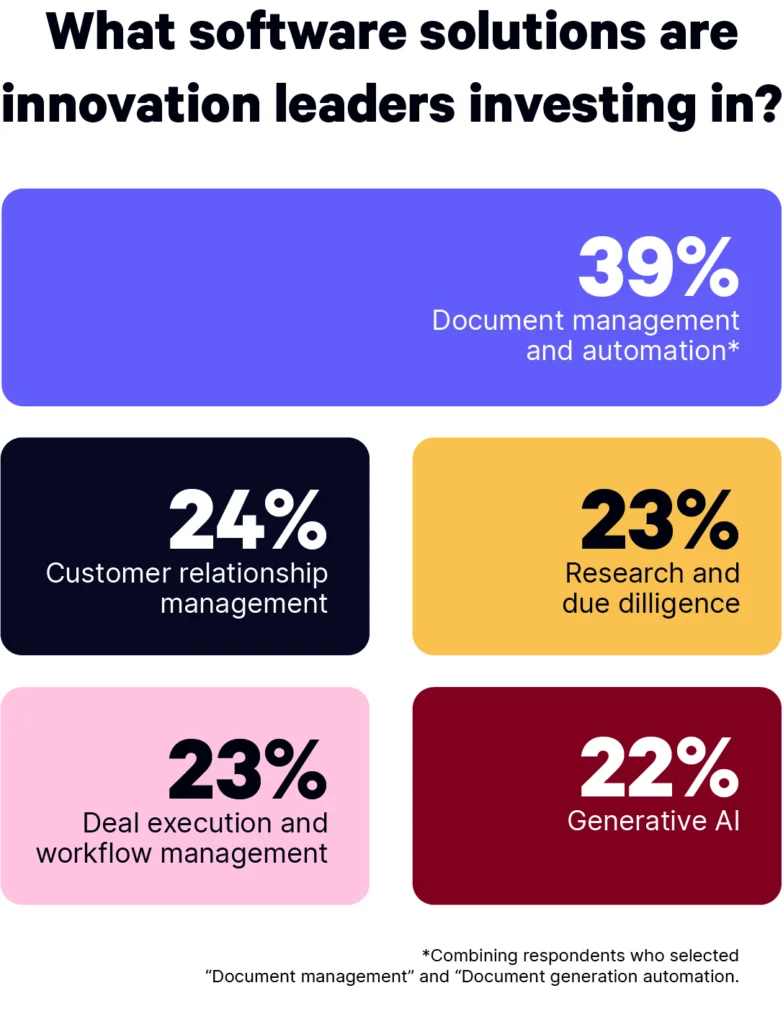
Source Scrub predicts that advanced technology and automation will become mandatory for investment banking firms. Automating time-consuming, repetitive tasks (that can cause banker burn out) should be a priority this year. By eliminating manual tasks, teams can reallocate time into more fulfilling, high-value work—increasing the likelihood of adoption and successful implementation.
So if you’re also struggling to retain and/or motivate staff, document automation software should be on your radar.
Tip 2: Consider ROI From the Beginning
Clear ROI metrics were voted as the most important factor in choosing a vendor. So, look for software with an ROI calculator that lets you quantify the true value-add of your software before rollout.
Make sure your new software contains usage stats, too, so you can regularly monitor usage post-launch. Usage stats enable you to share ROI back to senior stakeholders. If you can clearly demonstrate time saved or revenue gained from the software, you can confidently justify the spend.
Identifying low usage is also a great opportunity to seek feedback, ask your vendor for training and encourage your teams to incorporate the software into their workflow.
How UniCredit Increased ROI With Pitchbook Automation
For example, UniCredit has seen a huge increase in ROI since streamlining its pitchbook creation with UpSlide. By reducing the time it takes to prepare for a pitch, the teams can now focus on idea generation and growing the company.

UpSlide frees up time to concentrate on the real pitching activity. It eliminates the time spent organising the pitch, checking and proofing – you can rest assured that part is done correctly and instead concentrate on idea generation and adding value.

Peter Dieler
Associate Director, DCM
Want to find out more? Learn how to measure software ROI.
Tip 3: Consolidate Vendors
29% of innovation leaders are consolidating their tech-stack with all-in-one solutions to increase adoption rates.
Andrea Gentilini, Head of Quantitative Investments at Vontobel, shares further insight, stating that it would be wise for asset owners to review their technology stack and consolidate vendors given current market conditions. The more integrated your tech stack is, the greater chance of adoption.
Say, for example, you’re looking for a productivity solution that automates tasks across the entire Microsoft 365 suite. Don’t work with separate providers (one for Outlook and one for Excel), find one that can integrate with both – such as UpSlide.
UpSlide also works alongside your existing data providers, such as Factset, so you can streamline pitchbook and reporting workflows without impacting current processes.
Tip 4: Choose a Vendor With In-House Consultants
28% of respondents are choosing vendors with dedicated adoption and deployment support to alleviate internal resources.
Currently, many software vendors offer limited support throughout the roll-out and little to no support post-deployment. Whilst choosing a vendor without support may be cheaper, it will likely cost you significantly more in the long run (especially if you’ve got limited internal resources).
Premium vendors with dedicated in-house consultants will work with you to ensure a smooth implementation and minimal disruption to your operations.
The costs of poor deployment can be huge, so look for vendors that offer pre- and post-support, as well as ongoing care. They’ll likely be able to offer regular training, so your teams are always up to speed with the latest software updates.
Want to learn more? Discover tips for choosing software and effectively deploying it
Tip 5: Enjoy Successful Software Deployment and High Adoption Rates With UpSlide
UpSlide is a productivity tool that maximizes ROI for investment banks around the world—despite 2024’s epidemic of budget cuts and scarce resources.
Our in-house consultants make deployment a breeze, supporting your teams throughout your implementation, adoption and ongoing use of our software. You’ll enjoy peace of mind, knowing our software has airtight security and is regularly updated to meet your ever-changing business needs.
The benefits are endless – from accurate data and streamlined workflows to building flawless pitchbooks 4x faster. Junior bankers will be able to deliver more projects each month, so your company can hit its business goals more quickly.
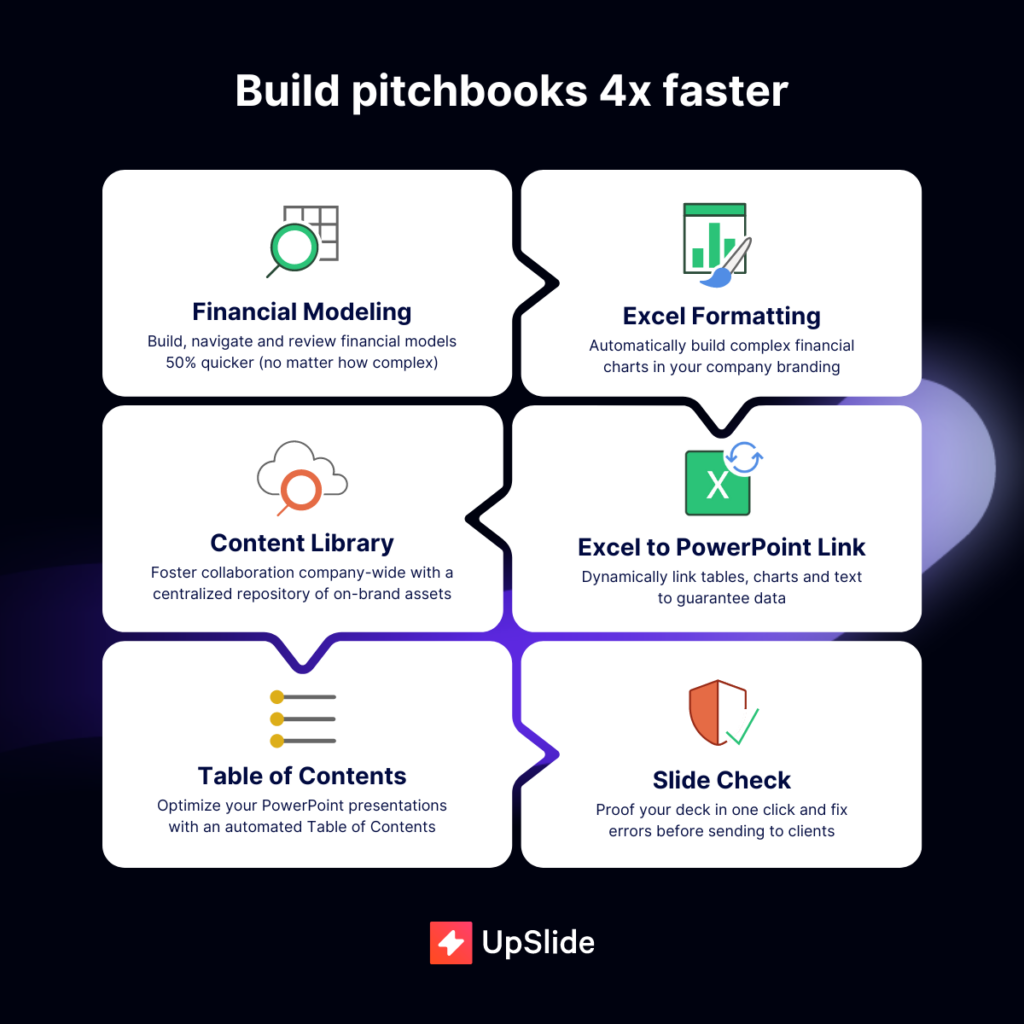
Key Takeaways
Software budget cuts across investment banks are rapidly on the rise—and banks’ remaining budgets are being eaten up by poor software deployment.
However, innovation leaders who invest in automation and productivity tools, from a premium vendor, will enjoy a smooth deployment that streamlines operations, optimizes spend and increases ROI for years to come.
For more trends, challenges and strategies that will help you navigate software spending, download our investment banking software report and future-proof your tech stack.
TL;DR
According to our recent study, 99% of investment banks are suffering from tech budget cuts, and a lot of leftover budget (over $1.2M in some cases) is being eaten up by poor software deployments
Low quality training, substandard software deployments, ineffective change management, unidentified dependencies and siloed tech stacks are the main culprits for implementation challenges.
Investment banks are prioritizing document management and automation software to deliver the most value for their company. Too many manual tasks can contribute to banker burn out
Premium vendors with a dedicated implementation service, such as UpSlide, handle these challenges for you, so your software is implemented effectively, doesn’t go to waste and increases profitability long-term.
Learn more
• Build or buy? Here’s why investment banks are investing in external software
• How to choose the right investment banking solution and effectively deploy it





